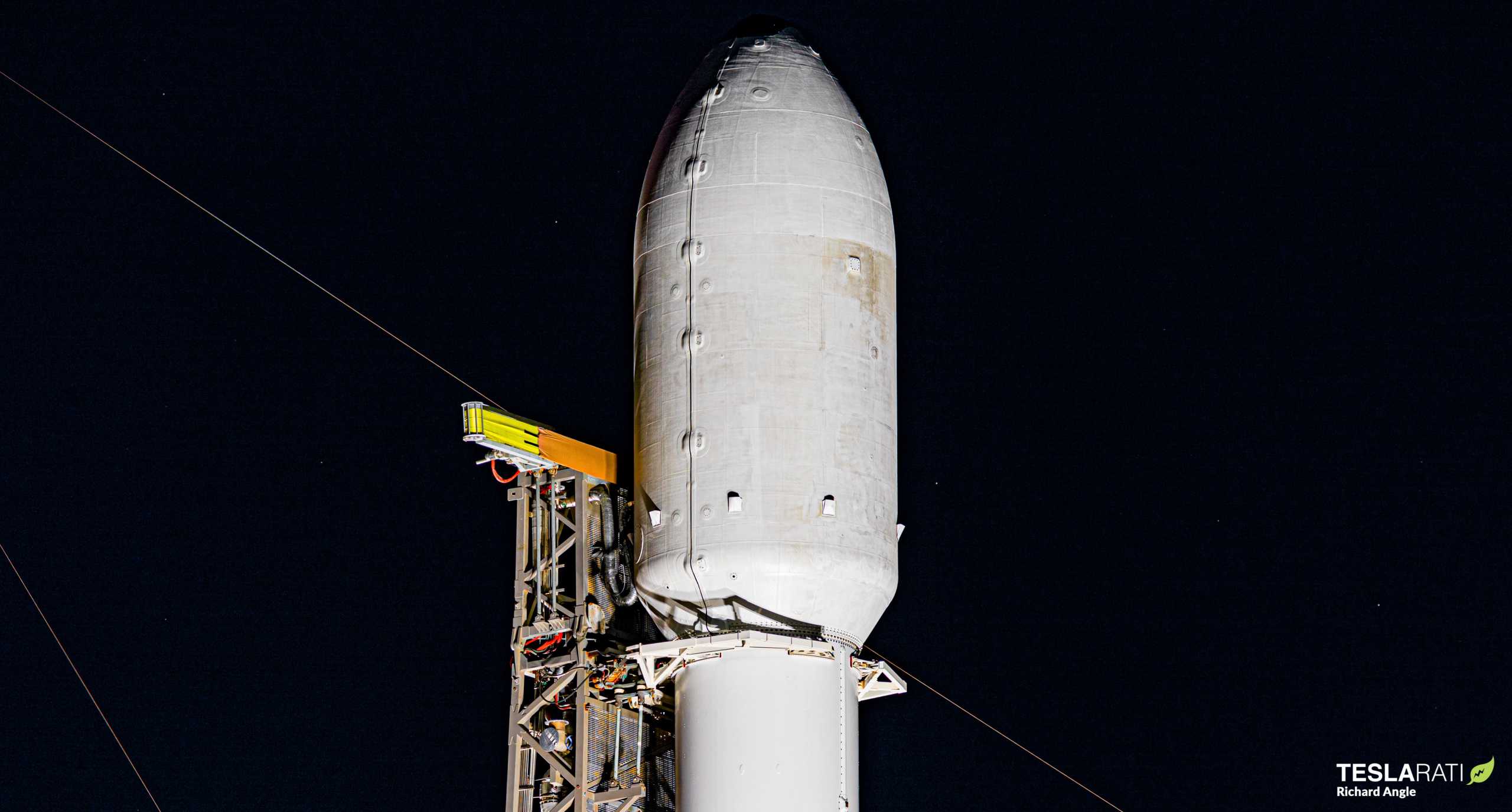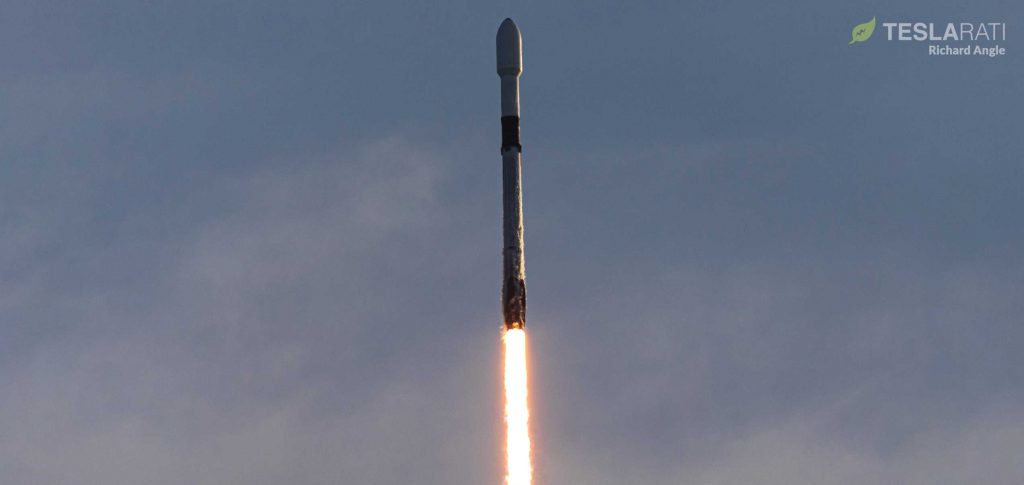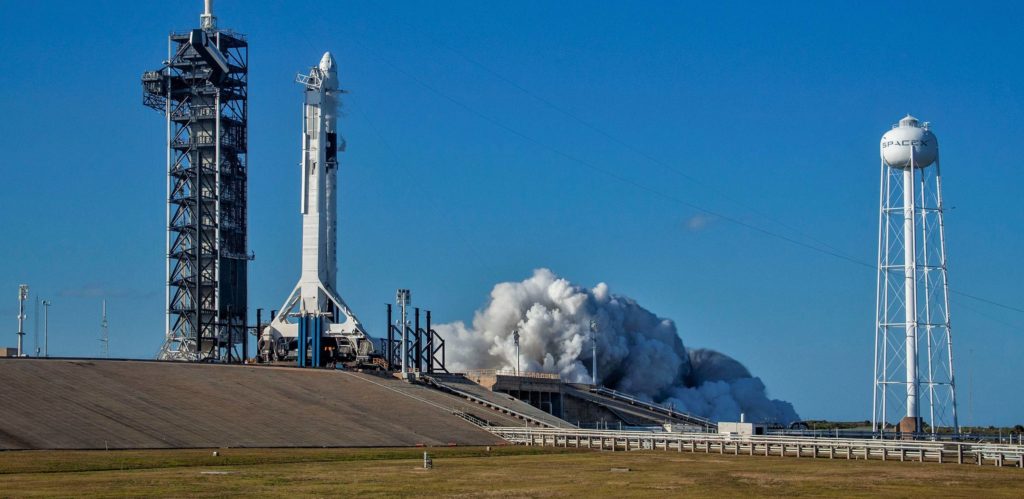

News
(Update: scrubbed) SpaceX’s next Starlink launch to break rocket fairing reuse record
Update: SpaceX says that today’s Starlink-12 launch attempt was scrubbed due to a mysterious “recovery issue.” Liftoff from Kennedy Space Center Pad 39A is now scheduled no earlier than (NET) 1:57 pm EDT (17:57 UTC) on Friday, September 18th.
Prior to the announcement, fairing recovery ship GO Ms. Tree was spotted diverting to a North Carolina port for unknown reasons, leaving twin ship Ms. Chief to recover both fairing halves. Based on bouy data, conditions at the Atlantic Ocean fairing and booster recovery zones appeared to be moderately challenging but far from unreasonable and SpaceX has been happy to point to recovery weather for past launch delays.
SpaceX has revealed that its next Starlink launch will mark a new first for Falcon 9 payload fairing reuse, reaching a milestone that took booster reuse 18 months in less than a year.
Scheduled to lift off no earlier than (NET) 2:19 pm EDT (18:19 UTC) on Thursday, September 17th, the Starlink-12 (v1.0 L12) mission will be SpaceX’s 11th in 2020 alone and 13th overall. If things go according to plan, it could leave SpaceX’s nascent constellation just two or so months away from the beginning of the first public beta tests of Starlink internet service.
Meanwhile, Falcon 9 booster B1058 will be attempting its third launch less than four months after its flight debut, an unprecedented cadence of reuse for SpaceX. Aside from likely ensuring that B1058 becomes the proud holder of SpaceX’s first and second place records for booster turnaround (time between launches), the mission also continues an unexpected trend: the near-extinction of Falcon 9 static fire tests.

SpaceX’s first successful Falcon booster landing happened in December 2015, just a few months shy of five years ago. In March 2017, two years later, SpaceX reused a Falcon 9 booster on an orbital-class launch for the first time in history. Some 21 months after that historic milestone, SpaceX launched the same Falcon 9 booster for the third time, kicking off a relentless series of reusability firsts that continue to be made to this day.
Now, SpaceX says it’s about to launch the same Falcon 9 payload fairing half for the third time in a significant and unexpected first for fairing reuse. Constructed primarily out of a carbon fiber-aluminum honeycomb composite material, Falcon fairings are dramatically more fragile – and reaches much higher altitudes and velocities – than the boosters SpaceX has cut its teeth on recovering and reusing.


Compared to booster reuse, it’s quite the achievement. SpaceX first managed to launch the same Falcon 9 booster three times in December 2018, ~33 months after the first booster reuse. Measured from SpaceX’s first fairing reuse, completed in November 2019 as part of the first Starlink v1.0 launch (Starlink-1), the company will have managed to cross the three-flight fairing reuse barrier less than 11 months later – a full three times faster than SpaceX’s booster reuse program took to achieve the same milestone.
Additionally, prior to SpaceX’s September 16th reveal, it was purely up to speculation whether the company would be able to reuse Falcon fairing halves more than once, particularly when a given fairing half is only fished out of the ocean. If successful, Starlink-12 will prove that Falcon fairing halves can be reused at least three times regardless of whether SpaceX was/is able to catch said halve in a recovery ship’s net.


No more static fires?
Meanwhile, SpaceX appears to be turning a major corner on Falcon 9 launch operations. Of all 93 Falcon 9 launches since the rocket’s June 2010 debut, every single one has been preceded by a combined wet dress rehearsal (WDR) and static fire test a few days or weeks prior to liftoff. Effectively simulating a launch 1:1 up to the exact moment before liftoff, SpaceX has used static fires to verify vehicle health and firewall minor quality assurance lapses for as long as it’s been launching rockets.
In a major operational change that has almost flown under the radar, SpaceX appears to have killed the practice of universal prelaunch static fires beginning with Starlink-8 in June 2020. Including Starlink-8, of the seven launches SpaceX has completed in the last three months, just three (GPS III SV03, Starlink-9, and Starlink-10) included Falcon 9 static fire tests prior to liftoff. A step further, two of the four static fire-free launches were for major commercial missions – not retiring risk on SpaceX’s own Starlink launches, in other words.



As of today, Falcon 9 has completed 65 successful launches since the last catastrophic vehicle failure (Amos-6, September 2016) and 74 consecutively-successful launches if Amos-6 (which never lifted off) is excluded. As of 2020, it’s the most reliable US launch vehicle currently in operation, surpassing ULA’s Atlas V several months ago. In fewer words, it’s not actually surprising (in retrospect) that SpaceX has begun to relax its position on static fires – especially considering that there isn’t another launch provider on Earth that static fires rockets before every launch.
More likely than not, SpaceX will continue to static fire Falcon 9 and Heavy boosters at the launch pad before their flight debuts and upon customer request. If launch or post-flight inspection data offer reason(s) for concern, SpaceX may still choose to static fire boosters out of caution. Additionally, SpaceX shows no signs of ending the practice of performing full booster static fires in McGregor, Texas as part of acceptance testing, still leaving it a step beyond traditional rocket manufacturers, which only static fire individual engines.
Regardless, SpaceX’s 13th Starlink launch will be streamed live as usual, with coverage beginning around 15 minutes prior to liftoff.
Check out Teslarati’s Marketplace! We offer Tesla accessories, including for the Tesla Cybertruck and Tesla Model 3.

News
Tesla starts showing how FSD will change lives in Europe
Local officials tested the system on narrow country roads and were impressed by FSD’s smooth, human-like driving, with some calling the service a game-changer for everyday life in areas that are far from urban centers.

Tesla has launched Europe’s first public shuttle service using Full Self-Driving (Supervised) in the rural Eifelkreis Bitburg-Prüm region of Germany, demonstrating how the technology can restore independence and mobility for people who struggle with limited transport options.
Local officials tested the system on narrow country roads and were impressed by FSD’s smooth, human-like driving, with some calling the service a game-changer for everyday life in areas that are far from urban centers.
Officials see real impact on rural residents
Arzfeld Mayor Johannes Kuhl and District Administrator Andreas Kruppert personally tested the Tesla shuttle service. This allowed them to see just how well FSD navigated winding lanes and rural roads confidently. Kruppert said, “Autonomous driving sounds like science fiction to many, but we simply see here that it works totally well in rural regions too.” Kuhl, for his part, also noted that FSD “feels like a very experienced driver.”
The pilot complements the area’s “Citizen Bus” program, which provides on-demand rides for elderly residents who can no longer drive themselves. Tesla Europe shared a video of a demonstration of the service, highlighting how FSD gives people their freedom back, even in places where public transport is not as prevalent.
What the Ministry for Economic Affairs and Transport says
Rhineland-Palatinate’s Minister Daniela Schmitt supported the project, praising the collaboration that made this “first of its kind in Europe” possible. As per the ministry, the rural rollout for the service shows FSD’s potential beyond major cities, and it delivers tangible benefits like grocery runs, doctor visits, and social connections for isolated residents.
“Reliable and flexible mobility is especially vital in rural areas. With the launch of a shuttle service using self-driving vehicles (FSD supervised) by Tesla in the Eifelkreis Bitburg-Prüm, an innovative pilot project is now getting underway that complements local community bus services. It is the first project of its kind in Europe.
“The result is a real gain for rural mobility: greater accessibility, more flexibility and tangible benefits for everyday life. A strong signal for innovation, cooperation and future-oriented mobility beyond urban centers,” the ministry wrote in a LinkedIn post.
News
Tesla China quietly posts Robotaxi-related job listing
Tesla China is currently seeking a Low Voltage Electrical Engineer to work on circuit board design for the company’s autonomous vehicles.

Tesla has posted a new job listing in Shanghai explicitly tied to its Robotaxi program, fueling speculation that the company is preparing to launch its dedicated autonomous ride-hailing service in China.
As noted in the listing, Tesla China is currently seeking a Low Voltage Electrical Engineer to work on circuit board design for the company’s autonomous vehicles.
Robotaxi-specific role
The listing, which was shared on social media platform X by industry watcher @tslaming, suggested that Tesla China is looking to fill the role urgently. The job listing itself specifically mentions that the person hired for the role will be working on the Low Voltage Hardware team, which would design the circuit boards that would serve as the nervous system of the Robotaxi.
Key tasks for the role, as indicated in the job listing, include collaboration with PCB layout, firmware, mechanical, program management, and validation teams, among other responsibilities. The role is based in Shanghai.
China Robotaxi launch
China represents a massive potential market for robotaxis, with its dense urban centers and supportive policies in select cities. Tesla has limited permission to roll out FSD in the country, though despite this, its vehicles have been hailed as among the best in the market when it comes to autonomous features. So far, at least, it appears that China supports Tesla’s FSD and Robotaxi rollout.
This was hinted at in November, when Tesla brought the Cybercab to the 8th China International Import Expo (CIIE) in Shanghai, marking the first time that the autonomous two-seater was brought to the Asia-Pacific region. The vehicle, despite not having a release date in China, received a significant amount of interest among the event’s attendees.
Elon Musk
Elon Musk and Tesla AI Director share insights after empty driver seat Robotaxi rides
The executives’ unoccupied tests hint at the rapid progress of Tesla’s unsupervised Robotaxi efforts.

Tesla CEO Elon Musk and AI Director Ashok Elluswamy celebrated Christmas Eve by sharing personal experiences with Robotaxi vehicles that had no safety monitor or occupant in the driver’s seat. Musk described the system’s “perfect driving” around Austin, while Elluswamy posted video from the back seat, calling it “an amazing experience.”
The executives’ unoccupied tests hint at the rapid progress of Tesla’s unsupervised Robotaxi efforts.
Elon and Ashok’s firsthand Robotaxi insights
Prior to Musk and the Tesla AI Director’s posts, sightings of unmanned Teslas navigating public roads were widely shared on social media. One such vehicle was spotted in Austin, Texas, which Elon Musk acknowleged by stating that “Testing is underway with no occupants in the car.”
Based on his Christmas Eve post, Musk seemed to have tested an unmanned Tesla himself. “A Tesla with no safety monitor in the car and me sitting in the passenger seat took me all around Austin on Sunday with perfect driving,” Musk wrote in his post.
Elluswamy responded with a 2-minute video showing himself in the rear of an unmanned Tesla. The video featured the vehicle’s empty front seats, as well as its smooth handling through real-world traffic. He captioned his video with the words, “It’s an amazing experience!”
Towards Unsupervised operations
During an xAI Hackathon earlier this month, Elon Musk mentioned that Tesla owed be removing Safety Monitors from its Robotaxis in Austin in just three weeks. “Unsupervised is pretty much solved at this point. So there will be Tesla Robotaxis operating in Austin with no one in them. Not even anyone in the passenger seat in about three weeks,” he said. Musk echoed similar estimates at the 2025 Annual Shareholder Meeting and the Q3 2025 earnings call.
Considering the insights that were posted Musk and Elluswamy, it does appear that Tesla is working hard towards operating its Robotaxis with no safety monitors. This is quite impressive considering that the service was launched just earlier this year.








